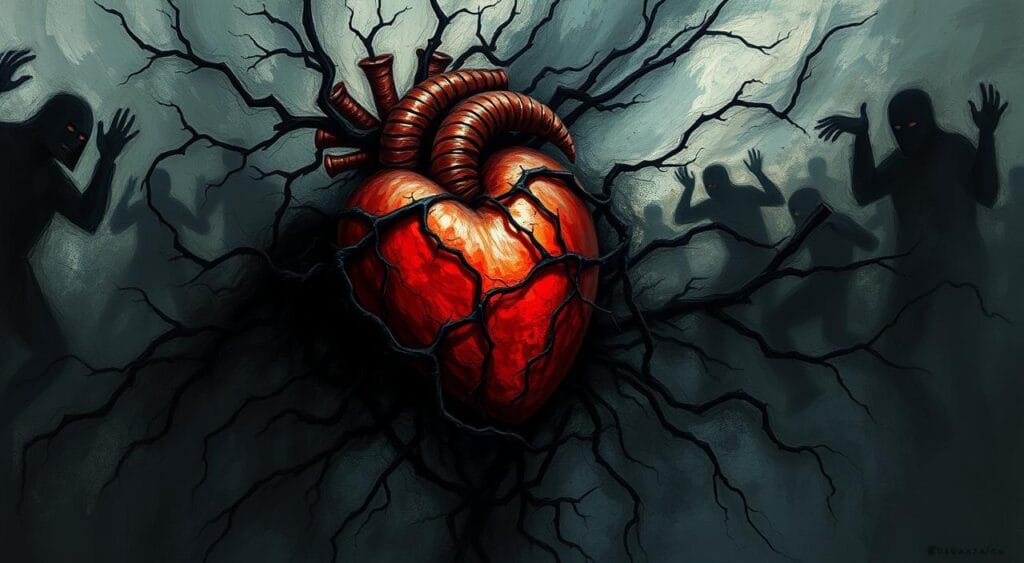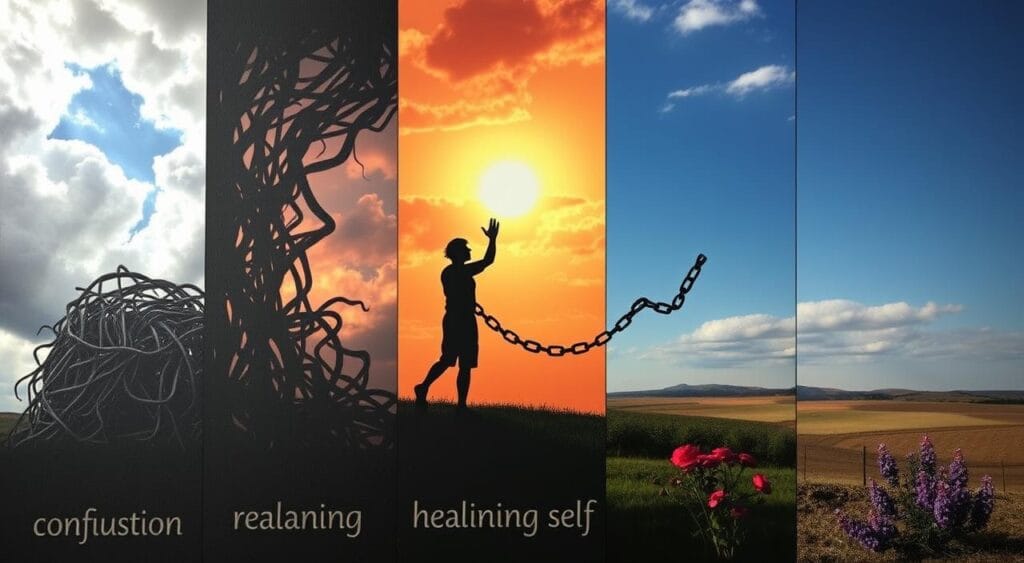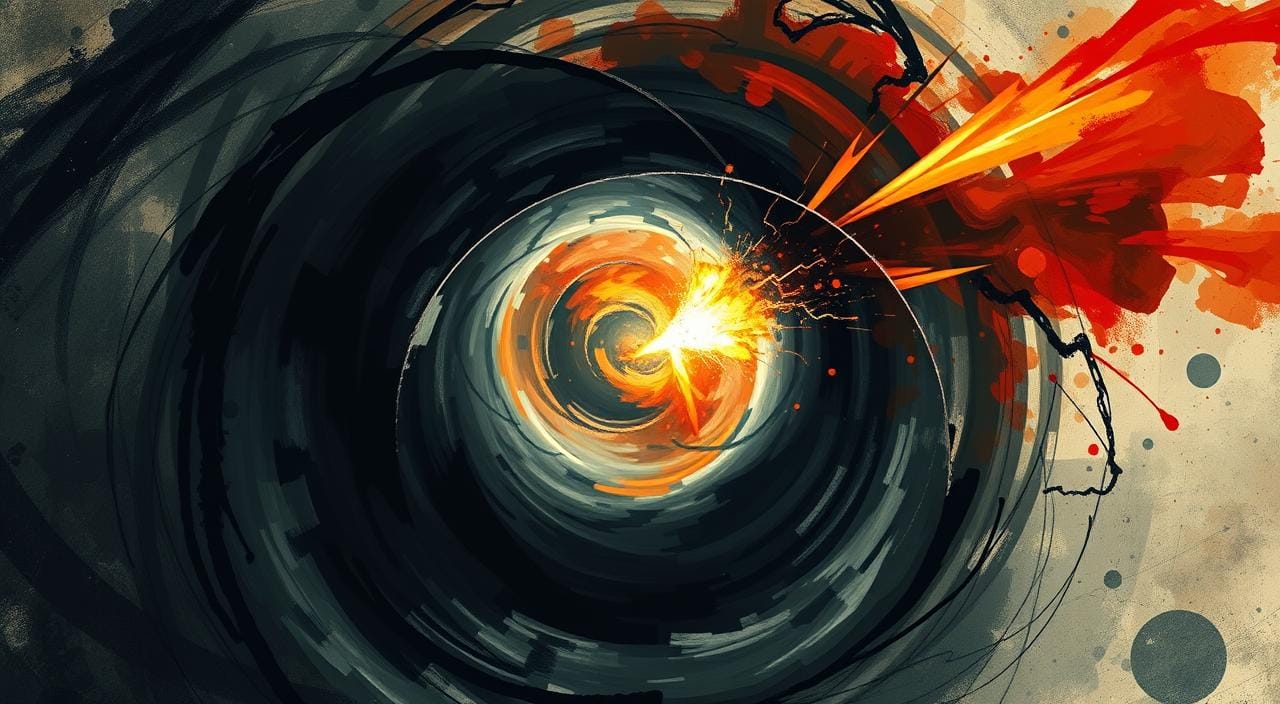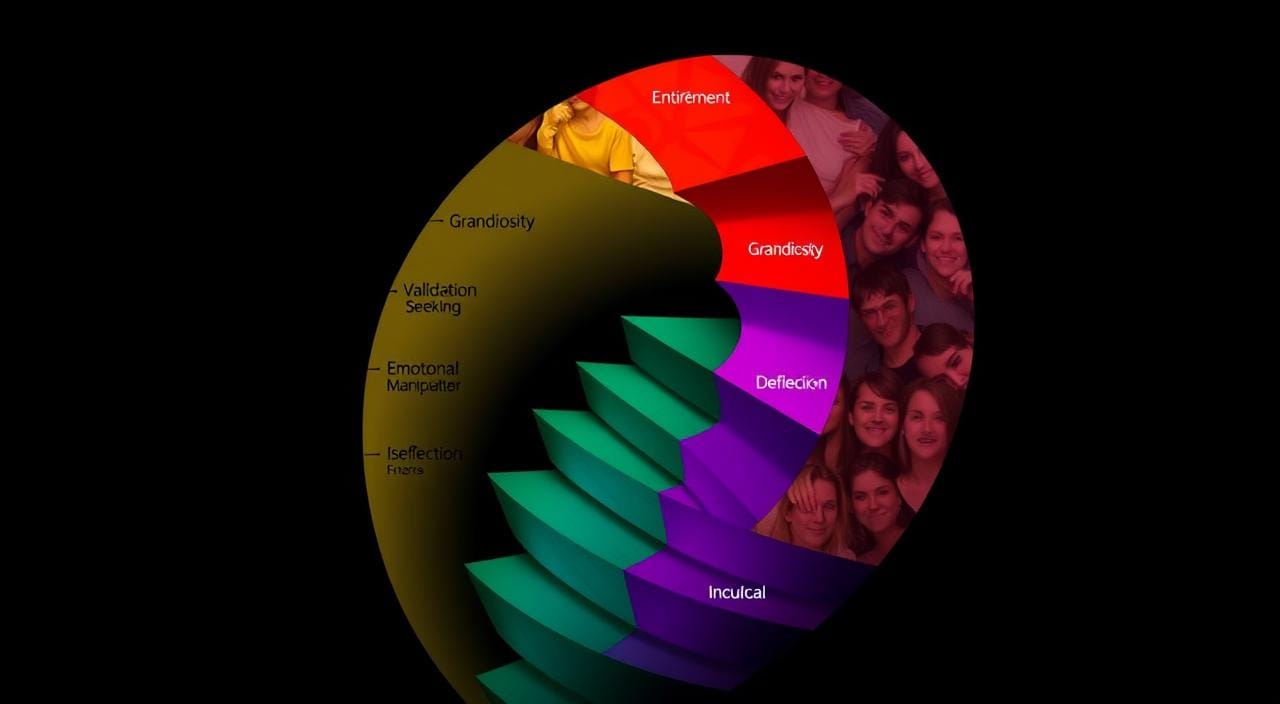Leaving a narcissist is like navigating a maze filled with emotional traps. But, there’s hope. This journey can lead to freedom and self-discovery. Let’s explore the stages that guide you towards healing.
Breaking free from a narcissist is tough, but it’s worth it. Remember, you’re not alone. Many have overcome this challenge, showing us strength and resilience1. Understanding the abuse cycle and challenges of leaving helps prepare us for what’s ahead.
In this guide, we’ll look at the stages of leaving a narcissist. We’ll cover everything from the initial attraction to rebuilding your life. We’ll also explore trauma bonding, fear of rage, and find comfort in biblical examples of survivors1.
Let’s support each other on this journey. Draw strength from those who have overcome similar challenges. Your freedom is near, and the future is full of hope and possibilities1. Let’s start reclaiming your life and embracing a brighter future.
Key Takeaways
- Understand the stages of leaving a narcissist, including the seduction, delusional, and reawakening phases.
- Recognize the unique challenges of trauma bonding, addiction, and fear of narcissistic rage when leaving an abusive relationship.
- Gain inspiration from biblical examples of individuals who had the courage to leave abusive situations.
- Develop a comprehensive plan and enlist the support of trusted friends and family for a safe and successful exit.
- Prioritize self-care, healing, and rebuilding your life after escaping a narcissistic relationship.
Understanding the Cycle of Narcissistic Abuse
The cycle of narcissistic abuse is complex and can make victims feel trapped and powerless. Learning about the stages is key for those wanting to escape these toxic relationships.
Seduction Phase
The cycle starts with a seduction phase. Narcissists use grand gestures and charm to draw victims in2. This phase, known as love-bombing, makes victims feel safe and lowers their defenses3. Despite their charm, narcissists often struggle to keep relationships going long-term2.
Delusional Phase
Once victims are trapped, the narcissist’s true nature shows. This phase involves devaluation and trauma bonding3. Victims become addicted to the narcissist’s unpredictable behavior3. This abuse can be severe, even deadly, making recovery hard2.
Reawakening Phase
The reawakening phase is when victims start to see the abuse. They may wake up due to severe abuse or learning about resources2. This realization can bring feelings of depression and shame4.
Ending narcissistic abuse is tough, as the tactics are subtle4. But, with support, victims can start healing and gain freedom.
Why It’s Difficult to Leave a Narcissist
Leaving a narcissist is hard because of their manipulation. The emotional bond formed through trauma bonding makes it tough to move on5. This bond forms when the victim becomes emotionally tied to the abuser5. Narcissists use affection and love to keep the victim dependent5.
Victims often stay loyal to the narcissist, even when faced with abuse5.
Trauma Bonding and Addiction
5 Victims may struggle to accept the abuse, believing their partner will change5. They feel needed and fulfilled in meeting the narcissist’s demands5. Narcissists use manipulation, making victims feel responsible for problems5.
Victims lose their sense of self, becoming isolated from others6. This creates an emotional dependency, similar to addiction.
Fear of Narcissistic Rage
5 The fear of retaliation, like threats or custody issues, keeps victims trapped6. Research shows that predictable rewards can lead to addiction-like behavior6. Stockholm Syndrome is when captives start to like their captors, as seen in the 1973 bank robbery in Sweden6.
Narcissistic Trauma Bonding has stages like Love Bombing and Gaslighting. Understanding these dynamics is key to escaping toxic relationships56.

The fear of the narcissist’s rage is a big reason people stay. Knowing about trauma bonding and manipulation is important for those trying to leave56.
Biblical Examples of Leaving Abusive Relationships
The Bible shows us examples of people who had to leave abusive relationships for their safety. King David, Jacob, and wise men all had to secretly leave to escape harm7.
These stories remind us that God wants the oppressed to be free. Leaving an abusive relationship, even secretly, is not wrong. It’s a step towards healing and safety7.
Just like Nebuchadnezzar, who had to live outside for seven years, we may need to separate from abusers. This is part of God’s plan for our freedom8.
“The Lord is close to the brokenhearted and saves those who are crushed in spirit.” (Psalm 34:18)
This verse tells us God’s love and protection are with those in abusive relationships. He guides us to freedom and restoration7. By looking at these examples, we gain strength and wisdom to leave abusive relationships, trusting in God’s plan for us.
Practical Steps for Planning Your Exit
Leaving a narcissist is tough, but you can do it with the right plan and support. Leaving a narcissist can be harder than leaving a healthy partner, because of their tricks and money control9. To leave safely and successfully, you need a detailed plan for your money, legal stuff, and safety.
Create a Comprehensive Plan
First, make sure your money is safe. To leave a narcissist, don’t tell them your plans, have a solid plan, save money, keep your digital life private, and leave without arguing9. Open a secret bank account, collect important papers, and save money for when you need it. Also, change your passwords and limit who can see your online stuff.
Then, think about your physical safety. It’s key to cut off contact with a narcissistic partner to avoid their tricks and emotional harm9. Find a safe place to stay, like a friend’s house or a shelter. You might also want to talk to the police or a domestic violence group for extra safety.
Confide in Trusted Friends and Family
Leaving a narcissist is hard, and you shouldn’t face it alone. Having a support group is crucial for survivors, giving them strength and reducing loneliness10. Tell your close friends and family about your plan to leave. They can offer help and keep you safe and on track.
Remember, your safety and the safety of your loved ones are most important. With a good plan and a strong support group, you can safely leave an abusive relationship.

| Key Steps for Leaving a Narcissist | Importance |
|---|---|
| Secure Finances | Ensure financial independence and resources to support yourself during the transition. |
| Protect Digital Privacy | Prevent the narcissist from tracking your movements and accessing your personal information. |
| Identify Safe Living Arrangements | Find a secure place to stay that is away from the narcissist to ensure your physical safety. |
| Confide in Trusted Supports | Rely on a network of friends, family, and professionals to provide practical and emotional assistance. |
“Leaving a narcissist is not just about physically removing yourself from the situation, but also about emotionally and mentally detaching yourself from their toxic influence. It’s a journey towards reclaiming your power and independence.”
By following these steps and getting help from your support network, you can safely leave a narcissist and start healing. Remember, your safety and well-being are the most important things. With the right plan, you can take back control of your life91110.
Stages of Leaving a Narcissist
Leaving a narcissist is a tough and complex journey. The Stages of Change Model rates readiness to leave on a scale of 1 to 10. A score of 1 means you’re not ready, and 10 means you’re fully ready12. This journey has many stages, each with its own challenges.
Maintaining Safety During the Escape
When you plan to leave a narcissist, keeping yourself safe is key. You might need to call the police or get a court order to protect yourself. Keeping safe is crucial in this step12. It’s wise to stay hidden and avoid the narcissist’s anger.
Avoiding the Narcissistic Rage
After deciding to leave, the narcissist might get very angry. This anger can be dangerous and hard to handle13. It’s tough to stay away from the narcissist because of the strong bond12.
Laying Low After Leaving
After leaving, it’s important to stay hidden and avoid social media. The narcissist might try to find you or spread false rumors about you14. Your safety and well-being should be your top priority during this time.

Leaving a narcissist is hard, but it’s doable with the right help and plans. The journey is tough, but the reward is freedom from narcissistic abuse121314.
Healing and Self-Care After Narcissistic Abuse
Recovering from narcissistic abuse is a tough and personal journey. Narcissistic abuse can include emotional abuse, gaslighting, and. It can also involve lying and a lack of empathy to control others15. This abuse deeply harms our mental health and our sense of self15. Yet, there are important steps we can take to rebuild our strength and take back our lives.
Journaling and Grieving
Journaling is a powerful tool for healing. Writing down our thoughts and feelings helps us process the trauma. It lets us face our pain, understand our emotions, and heal at our own pace.
No Contact and Detoxifying
Keeping away from the narcissist is key to healing. Relationships with narcissists can lead to codependency15. Any contact can slow down our healing. By focusing on self-care and being around supportive people, we can start to detoxify from the narcissist’s harmful influence and find ourselves again.
“The first step in the healing process is to remove yourself from the narcissist’s reach. This creates a safe space for you to focus on your own well-being and begin the journey of self-discovery.”
Along with journaling and no-contact, getting a therapist is crucial. They can help us spot manipulative behavior and set boundaries15. Their support is invaluable in understanding and overcoming the healing process.

The journey to heal from narcissistic abuse is not straightforward. It needs patience, kindness to ourselves, and a focus on our well-being. By adopting these self-care strategies, we can start to take back our lives and look forward to a better future.
The War for Your Freedom
Leaving a narcissist is like going to war. They often try to get back control and punish the victim16. They spread lies to make the person look bad17. It’s a tough journey, filled with “punishment” and manipulation17.
Navigating Smear Campaigns
Narcissists are skilled in lying and playing mind games16. They use sweet talk and empty promises to keep you16. It’s important to stay true to yourself and not talk back17.
Having trusted friends who believe you is key16. This helps you fight back against their lies16.
Leaving a narcissist is a fight for freedom and mental health16. It takes courage, planning, and support to break free16. Though hard, the reward is reclaiming your life and healing18.

“Walking away from a narcissist is typically the best path to freedom, despite the difficulties involved.”17
Narcissists may try to reconnect, showing up at work or home17. It’s important to block their attempts to contact you17.
After leaving, they might act out or try to make you feel guilty18. They might even pretend to be the victim18. It’s best to ignore them and set clear boundaries18.
Remember, self-care and healing are crucial during this time16. Keeping away from the narcissist helps you heal faster16.
Finding Strength and Resilience
Leaving a narcissist is a tough journey, but it’s also a chance to grow and change. We’ve built incredible strength and resilience. Survivors of narcissistic abuse often become more empathetic and find new purposes in life19.
We’ve faced many challenges, from idealization to discard and hoovering19. But with each step, we’ve gained courage. We’ve learned to set boundaries and not let others control us20. This shows our strength and the power of our minds20.
Now, we’re free to be ourselves and explore new things. We can find hobbies and friends who truly care about us19. Our journey is a sign of hope for others facing similar challenges21.
FAQ
What are the main stages of the narcissistic abuse cycle?
The narcissistic abuse cycle has three main phases. First, the seduction phase, where the narcissist charms and wins the victim’s trust. Then, the delusional phase, where the victim is devalued and feels addicted to the narcissist’s behavior. Lastly, the reawakening phase, where the victim realizes the relationship is unhealthy.
Why is it so difficult to leave a narcissist?
Leaving a narcissist is hard because of their manipulation. The victim gets trapped in trauma bonding. The fear of the narcissist’s rage, including threats and violence, also makes it hard to leave.
Are there any biblical examples of individuals who had to leave abusive relationships?
Yes, the Bible shows people who had to escape their abusers. King David, Jacob, and the three wise men are examples. They had to leave secretly to find safety and freedom.
What are the practical steps to plan for leaving a narcissist?
Planning to leave a narcissist requires a detailed plan. This includes finances, living arrangements, and legal steps. It’s also key to confide in trusted friends and family for support. Keeping the plan secret is crucial to avoid the narcissist’s rage.
What are the key stages involved in the actual process of leaving a narcissist?
Leaving a narcissist involves staying safe during the escape. This might mean getting police help or a court order. It’s also important to avoid the narcissist’s rage. After leaving, it’s best to stay hidden and avoid social media to prevent the narcissist from tracking you.
How can we heal and practice self-care after leaving a narcissist?
Healing after leaving a narcissist starts with self-care. Journaling can help process the trauma. It’s also key to avoid contact with the narcissist. Professional help and relaxation practices can aid in recovery.
How can we navigate the narcissist’s attempts to regain control and punish us after leaving?
Narcissists often retaliate when left. They may spread lies or try to discredit the victim. It’s important to stay true to oneself and avoid engaging with the narcissist. Support from trusted allies is crucial.
Source Links
- The 4 Phases of Leaving a Narcissist (& the Answer to “Why don’t you just Leave?”) | elephant journal – https://www.elephantjournal.com/2020/11/intimate-partner-violence-ipv-the-4-phases-of-leaving-these-relationships-giselle-naidu/
- How to Escape a Narcissistic Abuse Cycle – https://www.verywellmind.com/narcissistic-abuse-cycle-stages-impact-and-coping-6363187
- The Cycle of Narcissistic Abuse – https://www.narcissisticabuserehab.com/cycle-of-narcissistic-abuse/
- Narcissistic Abuse Cycle: Definition, Stages, and Coping – https://psychcentral.com/disorders/the-narcissistic-cycle-of-abuse
- Why Is It So Hard to Leave a Narcissist? 10 Helpful Tips – https://www.marriage.com/advice/mental-health/why-it-is-hard-to-leave-a-narcissist/
- Why Is It So Hard to Leave the Narcissist in Your Life? – https://www.psychologytoday.com/us/blog/understanding-narcissism/201801/why-is-it-so-hard-to-leave-the-narcissist-in-your-life
- How will God Judge a Narcissist When He’s Had Enough – https://krisreece.com/2024/05/03/how-will-god-judge-a-narcissist-when-hes-had-enough/
- How God Healed 1 Narcissist in the Bible – https://poemachronicles.com/healed/
- How to Leave a Narcissist: 10 Proven Ways – https://www.marriage.com/advice/mental-health/leave-a-narcissist/
- How to Finally Leave a Narcissist | Flourishing Hope Blog – https://www.flourishinghope.com/how-to-finally-leave-a-narcissist/
- Leaving a narcissist? How to prepare for the fallout. – https://www.linkedin.com/pulse/leaving-narcissist-how-prepare-dr-supriya-mckenna-mbbs
- The Stages of Changes It Takes to Leave a Narcissist — Phoenix Thriving Therapy – https://www.phoenixthrivingtherapy.com/blog/the-stages-of-changes-it-takes-to-leave-a-narcissist
- Stages of Grief When Realizing A Narcissistic Relationship – Cultivate And Flourish – https://cultivateandflourish.com/stages-of-realizing-a-narcissistic-relationship/
- The 5 Stages of Going No Contact with a Narcissist – Fairy Tale Shadows – https://fairytaleshadows.com/five-stages-of-no-contact-with-a-narcissist/
- Healing After Narcissistic Abuse: What Does Healing Look Like? – https://www.verywellmind.com/stages-of-healing-after-narcissistic-abuse-5207997
- Freedom after Leaving the Narcissist – 7 Practical Steps to Freedom – Moving Forward with Hope – https://www.movingforwardafterabuse.com/freedom/
- What Happens When You Leave a Narcissist – https://www.psychologytoday.com/us/blog/stress-fracture/202409/what-happens-when-you-leave-a-narcissist
- The Art of Detachment – Esteemology – https://esteemology.com/ending-a-relationship-with-a-narcissist-the-art-of-detachment/
- Saying Goodbye to Narcissism: Ending the Relationship With Strength – https://medium.com/mind-love/saying-goodbye-to-narcissism-ending-the-relationship-with-strength-a412102169be
- How to Emotionally Detach From a Narcissist: 17 Healthy Ways – https://www.marriage.com/advice/mental-health/how-to-emotionally-detach-from-a-narcissist/
- Narcissistic Abuse: Escaping to Thriving – https://medium.com/tales-from-the-narc-side/narcissistic-abuse-escaping-to-thriving-5d98c75e6a91







